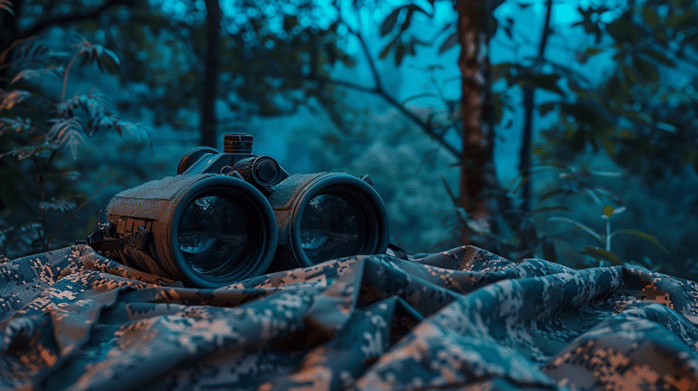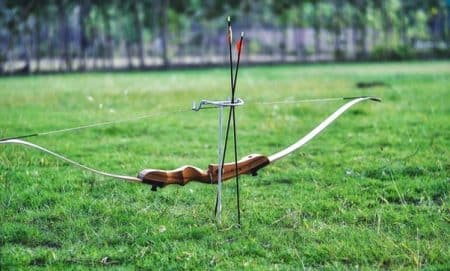For centuries, people dreamed of being able to see in the dark. To this end, they conducted hundreds of experiments with light and invented dozens of unusual devices. Thanks to this, about 80 years ago, this dream became a reality. The equipment available at that time was used exclusively for professional purposes. However, several decades later, it became accessible to ordinary people. Hobbyist models, although inferior in many ways to professional ones, nevertheless changed attitudes toward darkness and opened up unlimited possibilities for exploring the night. Today, professional night vision optics and hobbyist devices have much in common, yet remain distinct from one another. This article will explain the differences between them.
NVD generation
Throughout the history of NVDs, three generations of devices have been created. The first two are considered amateur night vision devices, offering limited functionality and a standard set of features. Today, Gen I models are virtually impossible to find commercially. This means that the term “amateur devices” most often refers to Gen II NVDs. These night vision devices are ideal for most simple tasks. They are in demand across a wide range of industries and will remain so for a long time to come. The more advanced Gen III and Gen III+ devices (improved version of Gen III) are considered professional equipment. They boast excellent performance characteristics and a wide range of features. These optics are widely used in the most complex and demanding applications. Military and police operations, rescue operations, and scientific research are just a few examples.
Ingress protection level
Professional and amateur NVDs differ in their level of protection against moisture, dust, impact, temperature changes, and other factors. Simpler models are often designed for use in temperatures ranging from -10 to +40 degrees Celsius. They have a waterproof housing and can withstand minor contact with complex objects. Drops almost always fail such night vision optics. Amateur models also rarely offer protection against backlighting, requiring extreme care when handling. Professional night vision optics are far superior. In 99% of cases, they can operate effectively even at temperatures between -40 and +50 degrees Celsius, withstand immersion in water and heavy rain, and remain undamaged when dropped or struck against various surfaces. They also offer protection against backlighting and overheating, making them ideal for extreme conditions.
Image quality
If you want to distinguish between amateur and professional night vision devices immediately, pay attention to image quality. Simpler models will always have inferior image quality. This is due to their limited capabilities and less-than-optimized features. Amateur night vision devices often have a resolution of up to 40 lp/mm, which inevitably introduces some defects. These are particularly noticeable at the edges of the image. Professional models offer better performance, offering a resolution of 50-70 lp/mm or even higher. This ensures clear images, even in low light, free of all the flaws common in amateur devices. Professional night vision devices are also enhanced with artificial intelligence, which processes the image before displaying it. This further improves image quality and widens the gap between them and amateur night vision devices.
Range
Anyone who has used NVDs at least once knows the importance of a device’s long range. This determines how far away the optics can see and recognize objects. Consumer NVDs have a range of no more than 250-300 meters. At this distance, the device can detect a person, a car, a large animal, or any other large object. Professional night vision optics have a range of 400-600 meters.
In some cases, it can reach 800, 900, 1000 meters, or even more. This significant difference is achieved through the use of more powerful and high-quality components. It is also made possible by additional options that allow the user to adapt the device to changing environmental conditions and achieve the maximum possible range.
Battery life
The differences between amateur and professional NVDs are clearly visible under conditions of long-term continuous operation. Here, simpler models significantly lack battery life, ranging from 4 to 8 hours (depending on environmental conditions and whether IR illumination is enabled). Professional night vision optics have substantially longer battery life. The best models can operate continuously for 50-60 hours. They also feature the ability to connect to external power sources, ensuring the battery charge never drops to 0% for a very long time. Some professional NVDs are also equipped with an intelligent power management system, which reduces energy consumption and maximizes battery life.
Available functionality
Any professional equipment has more features than amateur equipment. Night vision devices are no exception. Amateur models offer only basic functionality. Sometimes, this is supplemented by unique features that manufacturers use to attract more customers. Professional NVDs, on the other hand, always offer extensive functionality. This expands the capabilities of night vision optics and makes them a good choice for use in a variety of situations. Thanks to this wide range of features, users can adapt the device to ever-changing conditions and achieve maximum efficiency.
Integration with other devices and technologies
Consumer NVDs are devices designed for basic tasks. They provide good visibility in the dark and are helpful in a variety of situations. However, professional night vision optics are much more versatile. This is achieved through integration with other technologies. For example, night vision can be supplemented with thermal imaging, making NVDs excellent equipment even for use in fog or complete darkness. Professional night vision optics also integrate with other devices. They can be integrated into video surveillance systems consisting of dozens of equipment types, connected to vehicle control systems, mounted on weapons or military vehicles, and more. All this makes professional NVDs suitable for any task.
Size and weight
The differences between professional and amateur NVDs are noticeable even upon a quick inspection. Simpler models are almost always larger and heavier. This makes them less comfortable to use and creates specific issues when worn for extended periods in the hands or on the head. Professional NVDs are more compact and lightweight. Their advantages over amateur models are achieved through the use of more advanced materials, innovative design elements, and other factors. These optics are also always well-balanced. This feature eliminates discomfort even when the device weighs the same as its amateur counterparts.
NVD price
The combined cost of the differences described above, between professional and amateur night vision optics, affects the price of the equipment. Simpler models fall into the budget and mid-price categories. Their prices vary widely and are almost always under $1,500. This makes them affordable for anyone looking to rediscover the dark. Professional NV optics are more expensive. Sometimes the price difference can be as high as $15,000. However, on average, such equipment can be purchased for $3,000-5,000. The quality of individual components explains the higher price, the reliability of the device, its versatility, multifunctionality, and excellent feature set. Brand name often also influences the price, as only the “best of the best” companies manufacture professional models.
Availability
Hobbyists and professionals differ from each other even in terms of availability. Models designed for simpler tasks are sold in any specialty store and online. Their vast selection always allows potential buyers to find the optimal model to suit their personal needs and preferences. Professional NV devices are a different story. Many are produced in small quantities or even custom-made. This makes them less accessible, as finding them in large quantities is quite tricky. Some professional night vision optics (the most modern and innovative) are completely unavailable for sale. They are available only to the military and are produced exclusively for its needs.
Professional and amateur night vision optics are similar devices. They operate on the same principle, are virtually identical in design, and offer users the ability to see in the dark. At the same time, these devices have many differences. These differences give professional optics an advantage over amateur optics, making them the best solution for the most demanding tasks. However, simple models are not useless. Amateur optics also have hundreds of applications and are indispensable for various categories of users.
Per our affiliate disclosure, we may earn revenue from the products available on this page. To learn more about how we test gear, click here.




